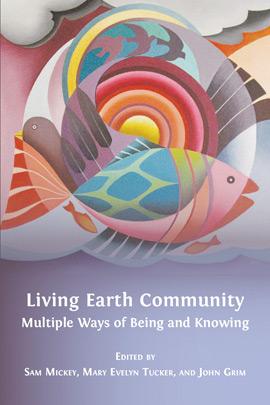
You live in an apartment in the city, and you don’t see the starry sky. You see an empty sealing, and sometimes you hear the sound of your computer, TV, or fan. You do not hear birds, or rathe r you don’t notice them. You are detached from your own habitat, the earth.
 This book is a connecting code to your habitat, where you are residing but not living. The anthology explores different stories from various subject domains, but all are directed towards a similar goal; how we all are connected, not only humans, but also animals, plants, soil, air, water and even spirits.
This book is a connecting code to your habitat, where you are residing but not living. The anthology explores different stories from various subject domains, but all are directed towards a similar goal; how we all are connected, not only humans, but also animals, plants, soil, air, water and even spirits.
As we are trapped in the human-centered sciences and knowledge systems, we have ceased to see and acknowledge the world in its multiplicity of being. The book is about listening to voices that are dead, belong to non-living or non-human worlds. It is about crossing the boundaries of different worlds: plants, animals, rivers and spirits. In other words, listening to other kinds of others.
The book tries to answer the question, what living earth is? We don’t live ‘on the earth, but live ‘in’ the earth. According to David Abram, one of the writers, ‘living earth is something I feel with my animal body’. For David Haskell, human body and mind are mere manifestations of the living earth. We are connected to the planet and other animals through kinship and other relationships.
These kinships and relationships are biological, physical, chemical and so on.
The times are such, you hear about a burning ship in the ocean. Thousands of aquatic creatures have died due to the disaster and the government merely discusses monetary compensation. There is less discussion on the environment, how to restore it or who is accountable for such a debacle.
Interdisciplinary
The destruction of forests has become a normal sight in the island. It is high time we teach our younger generations how important it is to be part of the eco-systems. The book fits in well with such a discourse. The writers of the book are from various disciplines, including anthropology, geography, forestry and history. However, they are not traditional scholars from their disciplines, rather they redefine their discipline to function in a more-than-human world.
These writers challenge the idea of labelling the present epoch as Anthropocene. They challenge the human-centered nature of all the enlightenment sciences. The knowledge systems humans have produced have separated humans from other animals. Modern education has equipped humans to be ‘effective vandals’ of their own habitat. In support of this argument, Paul Waladu, one of the writers argues, how to reconfigure human sciences in a more-than-human world or reframe human ethics in a more-than-a-human world.
Enlightenment pedagogy separates the domains of ‘humans’ and ‘non-humans’, ‘living’ and ‘non-living’. This division separates humans from their own habitat. We are disconnected from our planet and eco-systems, with the knowledge we have created over time.
However, the book suggests how ‘non-human’ domains are connected to the human existence or, more precisely, humans are part of the non-human and non-living domains. These two territories – living and nonliving – respond to each other.
The animals understand how the earth is responding to its inhabitants, and they make use of these messages. One of the authors talks about how fish, birds and other animals migrate without a map, compass, or clock. Unlike humans, they understand the rhythms of the earth, and they know when to migrate and where to migrate.
Indigenous knowledge systems have accepted the ‘living earth’. These knowledge systems had the power to transcend the human world. These communities incorporated the world of animals, plants, spirits, rivers, soil, air into their own world and knowledge systems.
They introduced their children to the larger cosmos; they talked to the plants, animals and spirits. As David Abram explains, we are all part of the flesh of the earth. The changes in one corner of the earth would affect the other corners of the earth, as they all are organisms of the same body, the earth.
The story of Huia
One of the strongest stories in the anthology is, Learning a Dead Birdsong: Hopes’ echoEscape.1 in ‘The Place Where You Go to Listen’. This essay is centered on a recreation of the extinct Huia bird, recorded in the late 1940s by Hēnare Hāmana, a Maori. The author has met the family of Bartley – the person who invited Hamana to a studio for the recording -- and the Hamana family.
The Huia became extinct due to complex human causes, however, primarily due to the colonial mis-adventure. On one hand, the ecological communities which were related to Huia were cut down. On the other hand, huia skins and tails were commodified. The author’s attempt is to bring the dead bird song to life, remembering how we all are connected to the earth community and living earth and to remind us that we are living in an epoch of extinction.
Anushka Kahandagamage is a Doctoral Candidate at School of Social Sciences, University of Otago
